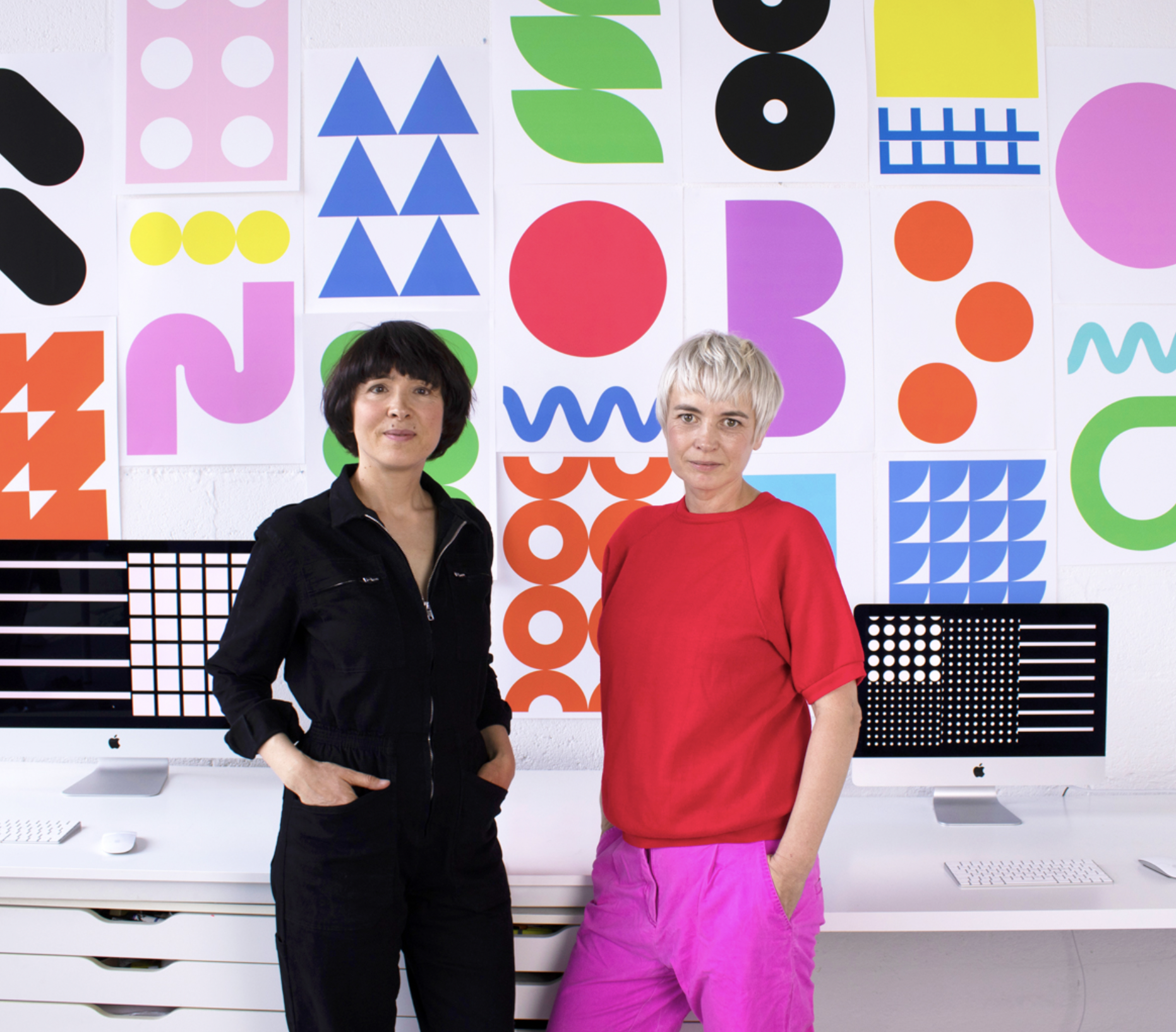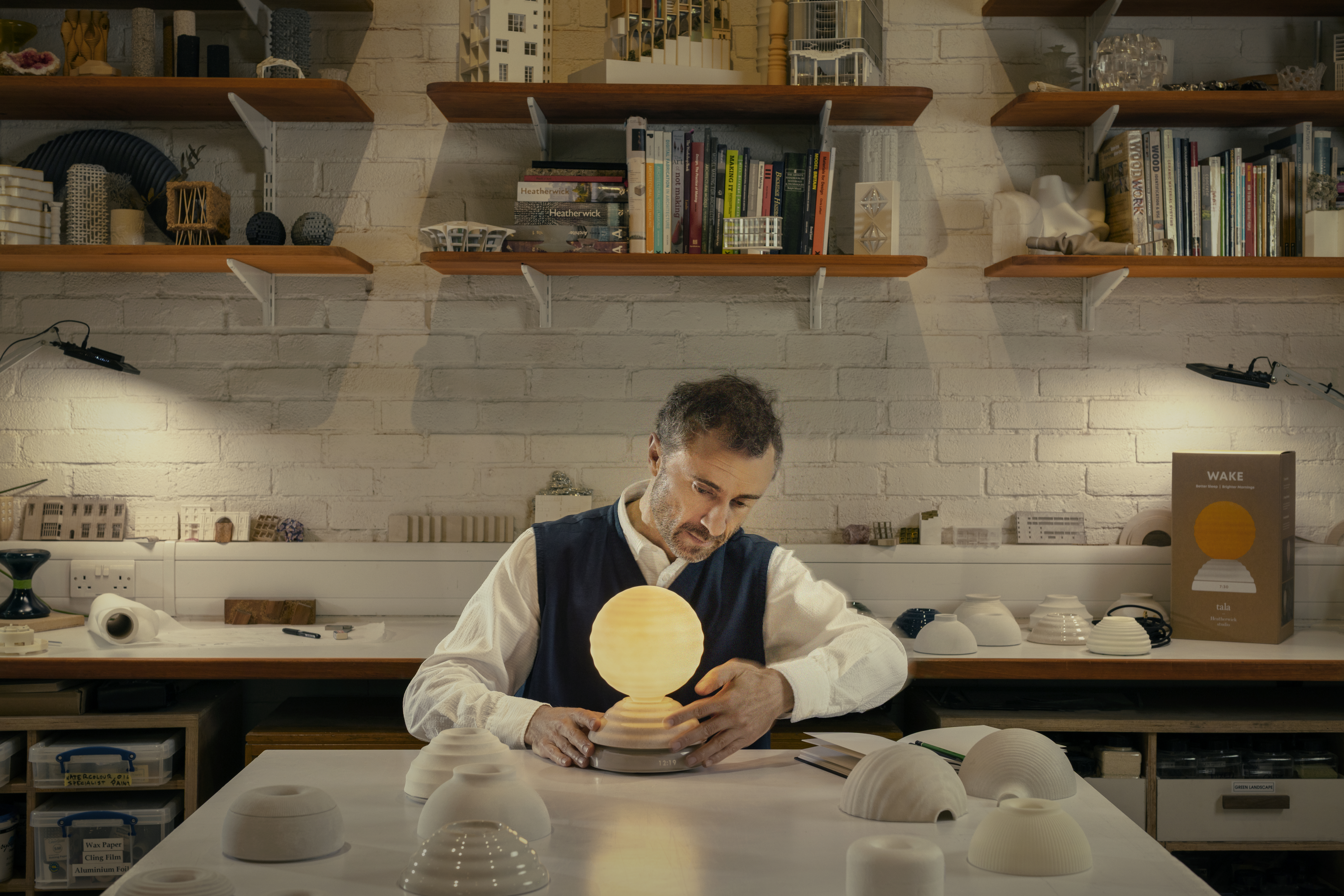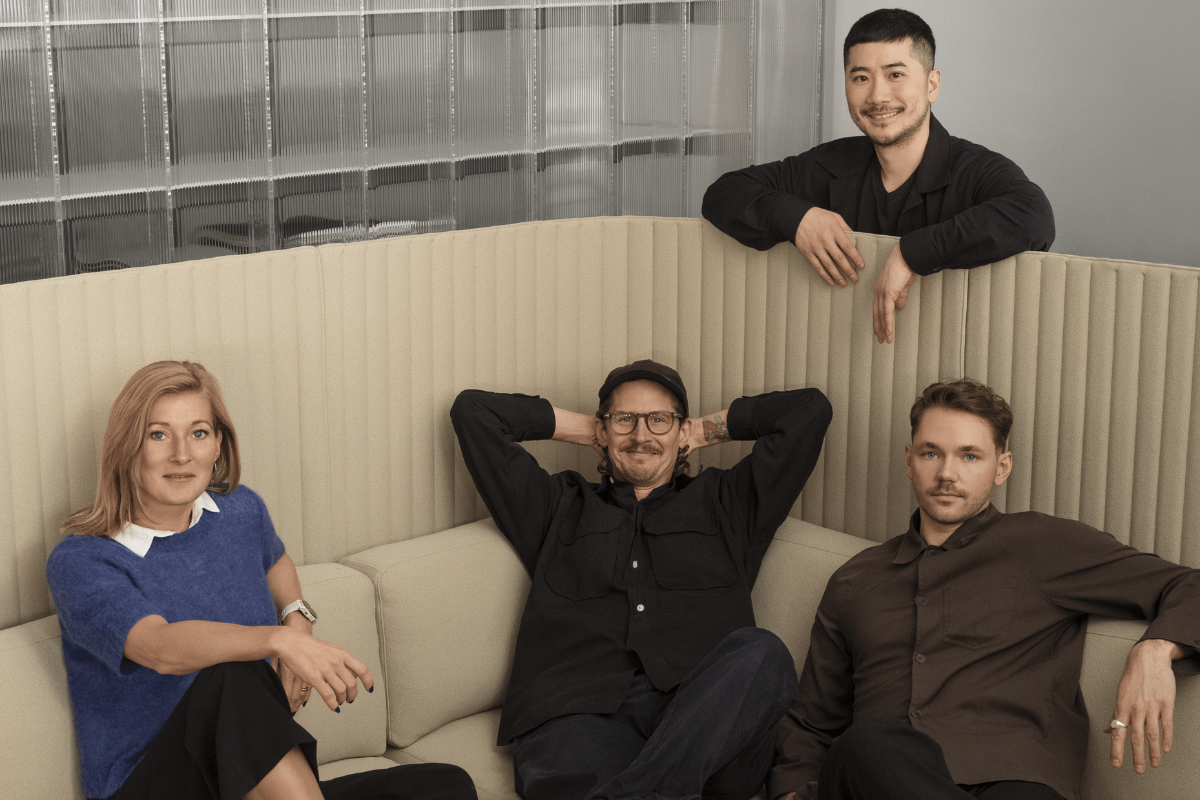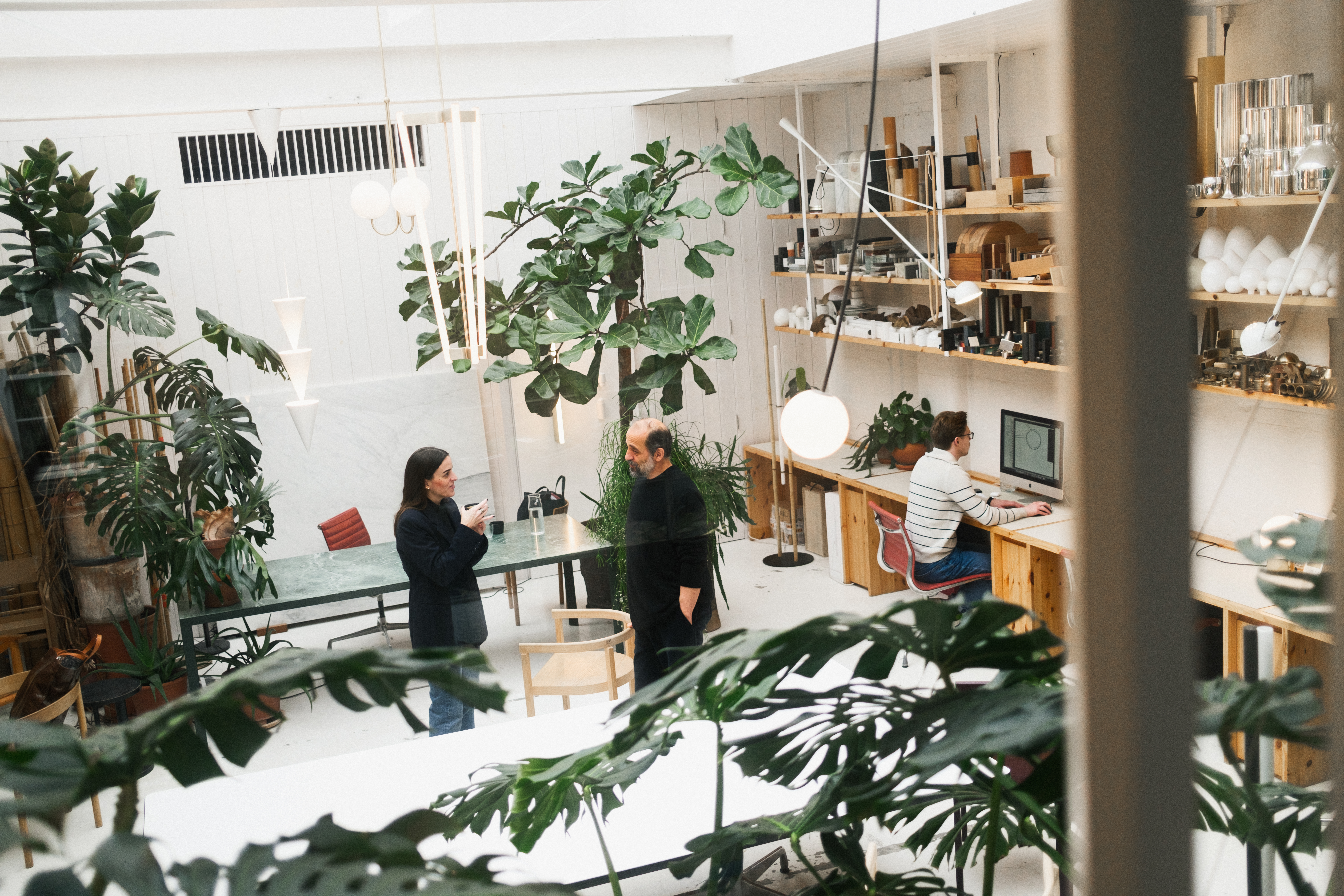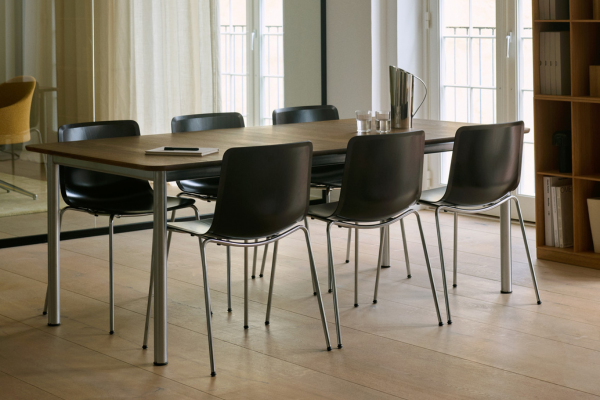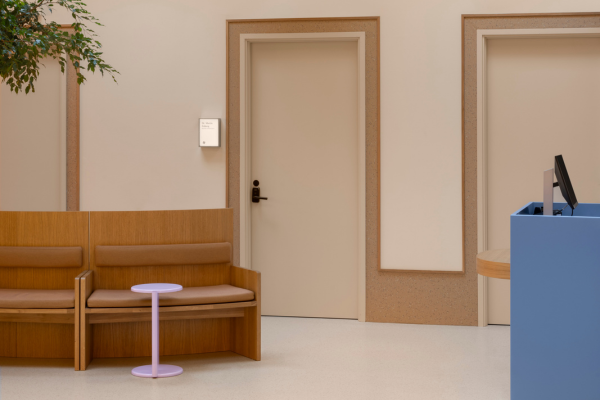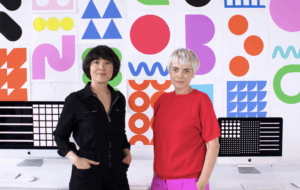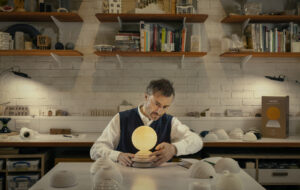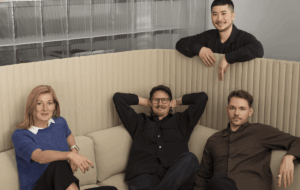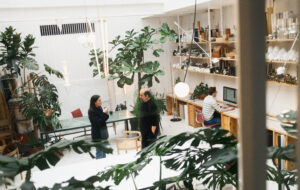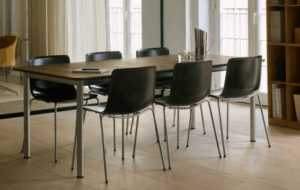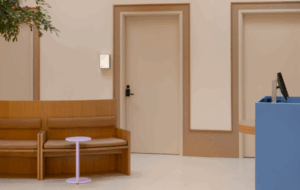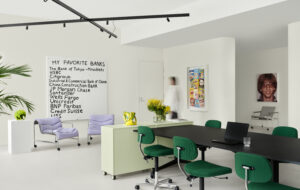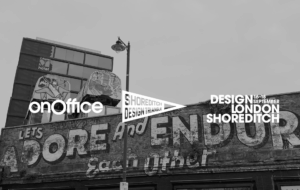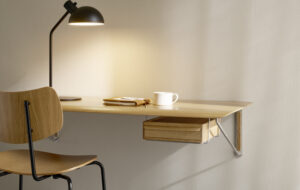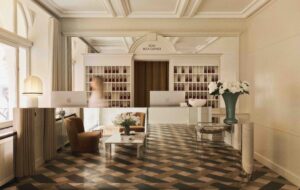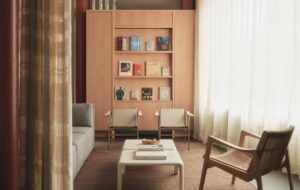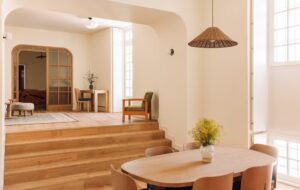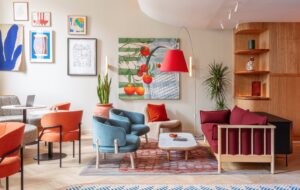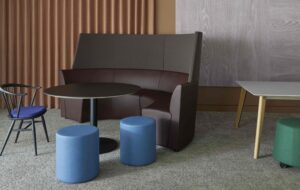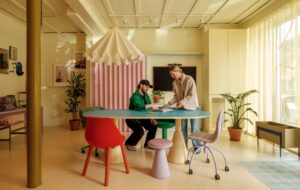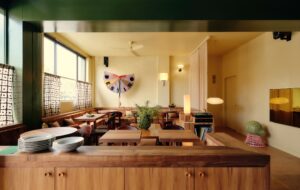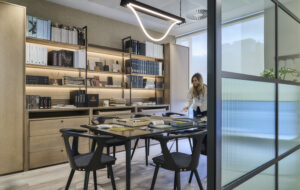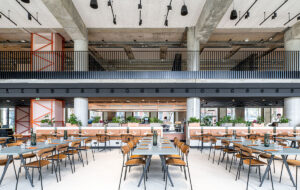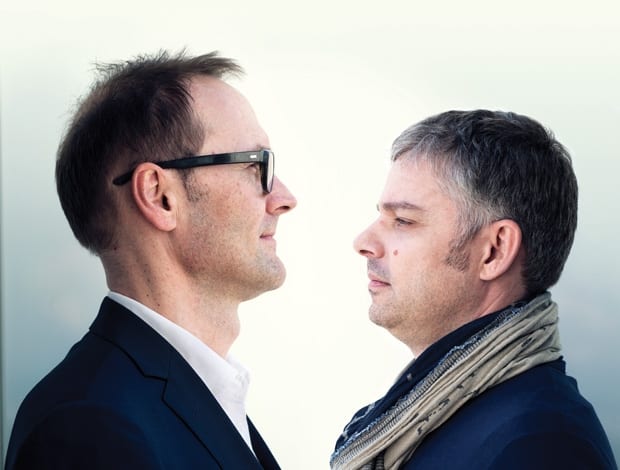 Markus Jehs (r) and Jürgen Laub (l), photographed at Orgatec|Characteristically simple. the A-chair makes other designers jealous|Shrimp, for Cor, whose segmented shape was inspired by the crustacean|Brunner’s Hoc bench and table presents a curvy, sculptural profile|The Stelton clock, with its moving rim, breaks with J+L’s usual lack of whimsy|Rounded upholstery meets a rigid frame for Wilkhahn’s Asienta chair|Wilkhahn’s Graph chair now has a suitably virile-looking matching table|The slender and elegant Leo MK2, a task light for Italian brand Nemo|Talk, a table system for boardrooms and conferences, made by German firm Renz||
Markus Jehs (r) and Jürgen Laub (l), photographed at Orgatec|Characteristically simple. the A-chair makes other designers jealous|Shrimp, for Cor, whose segmented shape was inspired by the crustacean|Brunner’s Hoc bench and table presents a curvy, sculptural profile|The Stelton clock, with its moving rim, breaks with J+L’s usual lack of whimsy|Rounded upholstery meets a rigid frame for Wilkhahn’s Asienta chair|Wilkhahn’s Graph chair now has a suitably virile-looking matching table|The slender and elegant Leo MK2, a task light for Italian brand Nemo|Talk, a table system for boardrooms and conferences, made by German firm Renz||
Rivals, then friends, the German designers have used their creative tensions to make some seriously coherent products
Creative partnerships are often sparked by conflict. In the music world, tension-fuelled relationships are everywhere, occasionally used as a tool by hard-bitten promoters to sell their latest pop hopefuls to a jaded public. Inevitably, they burn with a comet’s intensity before fizzling out under the innocuous euphemism of “creative differences”. For German designers Markus Jehs and Jürgen Laub, the two halves of Jehs + Laub, “creative differences” are often the beginning rather than the end of a project.
“We want to fight because it means there is something happening,” says Jehs. “First it is a feeling or intuition, and then you have to explain it. Maybe the man in the street cannot explain why he thinks something is stupid or not stupid, but our job is to explain why. This is where ideas are born.”
Although, to paraphrase Charles Eames, they take their fights seriously, there is nothing histrionic about the products spawned; far from it.
In fact, the duo’s work is characterised by an accomplished mid-century modern sensibility as opposed to exotic concepts. It is in the detail and the finish where Jehs + Laub excel. onoffice tracked them down at Orgatec – an environment that goes hand in glove with their serious-minded nature – where they unveiled new work for Brunner and longtime collaborators Renz, Cor and Wilkhahn.
Of all the new launches, it was the A-chair for Brunner that caught the eye. One well-respected British designer described it to me as a hidden gem, while another confessed they wished they had designed it. I relay the compliment, which confirms the pair’s belief that there was a gap in the market.
“There are many, many companies with many stacking chairs, but we felt there was nothing good,” says Laub. “With all of them you have the shell and the legs which you screw together with lots of parts. Put 300 of them in a room and it is very unquiet.” A-chair comprises two parts – a base and a shell, which can be combined in a variety of finishes: a wooden shell with plastic legs, or aluminium legs with a plastic shell. “This one chair can fit any room,” Laub concludes.
When arranged in rows, as they are in the press photos, the chairs resemble a well-drilled battalion of men marching in unison. With its simple form, the A-chair would be easy to overlook.
The industry’s big guns seemed to regard chairs and tables as passé this year, instead turning their focus toward reinventing the office cubicle. And while to many this appears a logical and indeed necessary step to claw back some of the privacy lost in open-plan offices, it fails to impress either designer. “This is a very attractive area for all the companies, because it is very hard to make money in the traditional arena. So they go in this direction. But in 500 years there are still going to be humans who need a chair and a table,” says Jehs. His compadre agrees, but goes further: “It is a fad. In two or four years you will not see any of this.”
“It is not necessary to have all these seating machines”
With sentiments like these it is no revelation to find the pair sticking to the office’s set pieces – meeting tables, conference chairs and suchlike.
I conduct our interview sat in one of their new products for Wikhahn, a sofa and chair combo called Asienta. Not only is it comfortable, but also looks inviting, thanks to a bulbous interior that bulges like the belly of an infant – contrasting agreeably with the outwardly cubic form.
The thin die-cast aluminium legs and frame seem almost too weedy to hold the weight of Orgatec’s carb- and protein-fuelled demographic, but this is illusory. Asienta is aimed at the contract market and is correspondingly robust. “Maybe we live in an era of dematerialisation where everything is made from less material,” says Jehs. “It is not necessary to have all these seating machines to sit in at work. It just makes things confusing. The chair should fit you automatically.” It’s an ethos explored with Graph – an ultra-masculine boardroom chair that boasted none of the normal gadgetry save for flexible stem derived from car suspension – and Shrimp for Cor. With Shrimp, Jehs + Laub removed sections of the wooden one-piece back, creating a crustacean-like shell that gives a little when you sit in it.
Of the two, Jehs is the chattier. Laub seems happy to take a back seat, opening up only when a question is aimed directly at him. He is, according to Jehs, the grounding force behind the duo, the one who brings occasional flights of fancy back to down to earth. “I am a bit here, there and everywhere. I don’t like to take care of everyday business. He [Laub] is very straight.” Conversely, it is Jehs the dreamer that drives the duo to greater heights. “If he has an idea, sometimes I might say, ‘Yes, but that is not enough, it must be fantastic.’” For a dreamer, Jehs shows an impressive lack of sentimentality when it comes to his work, a ruthless streak that Jehs admires: “He designs something for months and one day he just says, ‘this is bullshit,’ and throws it out. It could be two days before a presentation.”
Though they seem happy in their defined roles, the two know each other so well that they can slip into each other’s character to play devil’s advocate. “I am always sketching while I am talking and he is only talking while I am sketching,” says Laub. “At the beginning of a project this is how we work.” They are family men, meaning that, between work and home life, there is little time for anything else: “Having children keeps you from being a professional idiot.”
Physically they cut very different figures: Laub bespectacled and rangy, Jehs less so. Both speak in measured tones, their English coloured by the occasional idiosyncrasy.
They explain how they met at the Schwäbisch Gmünd design school in 1988 where, sat alongside each other during the entrance exam, they marked each other out as the “danger man” on the course. So began a rivalry that eventually, at the suggestion of one of their professors, morphed (reluctantly at first) into a partnership and friendship that has endured for over 20 years.
They interned in New York (catching a taxi was easier than in Palo Alto, they explain with faultless logic) and later pitched their first commercial venture, some luxury bathroom taps for Dornbracht. Unfortunately, the project coincided with the collapse of the communist GDR. With millions of their fellow countrymen on the breadline, Dornbracht sensitively shelved the project. Still, the advance provided the funds to help start the business.
“Ego has nothing to do with the design process”
From this stunted beginning Jehs + Laub gathered momentum, steadily racking up an enviable list of international clients.
It is the Italian companies, such as Cassina and MDF Italia, with their predilection for risk-taking, that has the pair bubbling with enthusiasm. “Their first response to a new idea is always emotional. They say, ‘Let’s do it,’ and if it seems impossible then it is a challenge,” says Jehs. “Everyone involved – the craftsmen for example – is a designer. You do a sketch and you don’t see the product again until it’s finished.” To many designers, this approximates the sort of nightmare in which you wake up a screaming mess.
For Jehs + Laub, it is a welcome collaborative effort. “A lot of the time they do something exactly how you would do it. It’s like they are reading your mind.”
They prefer to work with companies that have retained their factories and express dismay at manufacturing’s migratory flight from Europe to China (“If you buy something in the UK it should have something to do with that country”).
Similarly, the duo believes that well-produced furniture is better for the environment than recyclable products. “An argument made is that you can buy a chair and after three years you can disassemble the whole thing and recycle it. But why take it apart?” says Jehs, who explains how longevity is more important, and that the way to achieve that is through good materials and quiet design. These two strands unite the vast majority of their clients.
Its safe to say there aren’t many misfires in the Jehs+Laub portfolio. Virtually all their work is purposeful and somewhat traditional, in the sense that their sofas look like sofas and tables look like tables. All that matters is the product. “At the end of the day, the company, the designer – they are not important. What is important is that you are a partner with the CEO of the company and the product comes good. Ego has nothing to do with the design process,” argues Laub. There are, however, moments of ingenuity, like the Stelton wall clock, whose minute hand is attached to a moving outer rim.
For the most part, though, wild experimentation is not on the agenda. “We are not crazy. Sometimes you like to be crazy, but whenever we tried it we realised it was not possible for us to do that,” Laub says almost apologetically. “And at the end of the day, there is always Jürgen,” says Jehs. “It can become experimental, but we have to go back down to the ground and think, ‘What can we use this for?’”

